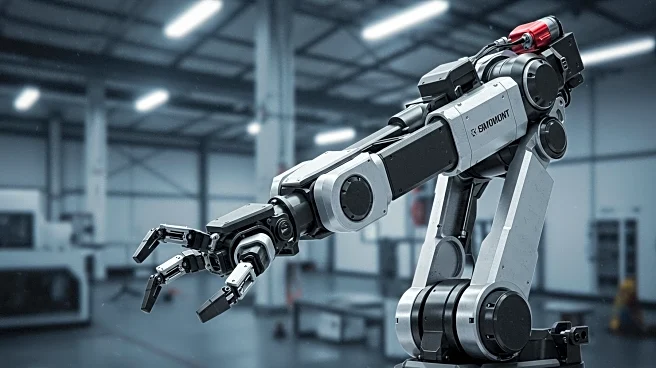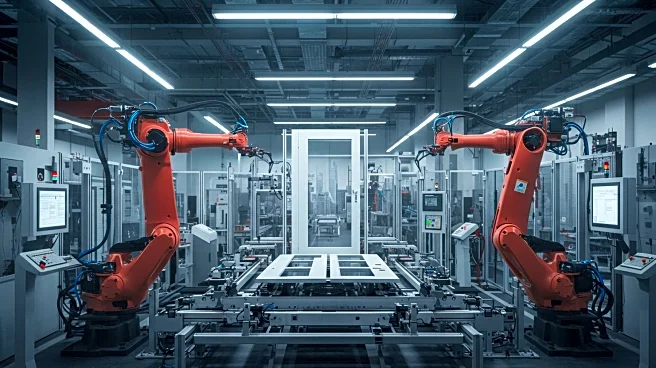What's Happening?
The North American robotics industry experienced modest growth in the first half of 2025, according to a report by the Association for Advancing Automation (A3). Robot orders increased by 4.3% and revenue rose by 7.5% compared to the same period in 2024. The automotive sector led the gains with a 34% year-over-year increase in units ordered. However, non-automotive sectors, including life sciences and electronics, accounted for 56% of total units ordered in Q2, indicating a shift towards broader industrial applications. Collaborative robots, or cobots, are gaining popularity, with 3,085 units ordered valued at $114 million, representing 23.7% of all units and 14.7% of revenue in Q2.
Why It's Important?
The growth in the robotics sector highlights the increasing role of automation in various industries beyond automotive, such as life sciences and electronics. This trend reflects broader economic shifts, including reshoring, labor shortages, and the need for operational efficiency. The rise of cobots, which can work safely alongside humans, addresses automation needs in space- or labor-constrained environments. This development underscores the importance of automation in building resilience, improving flexibility, and maintaining competitiveness in a rapidly changing global market.
What's Next?
If current growth patterns continue, the North American robotics market could surpass 2024 levels by mid-single digit growth rates by the end of the year. A3 plans to expand future reporting to include growth trends by sector, which may provide deeper insights into the evolving role of robotics across industries. Stakeholders in manufacturing and other sectors may increasingly invest in automation technologies to enhance productivity and address labor challenges.
Beyond the Headlines
The increasing adoption of cobots suggests a shift towards more collaborative work environments where humans and robots can coexist, potentially leading to changes in workforce dynamics and job roles. As automation becomes central to business strategies, companies may need to consider ethical implications, such as job displacement and the need for retraining workers.











